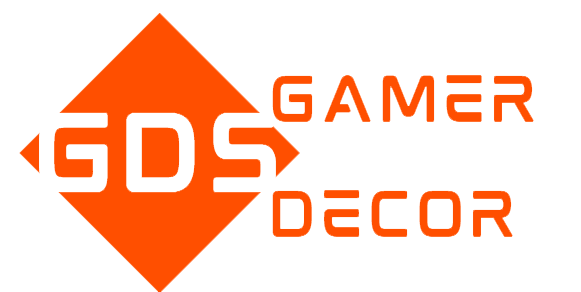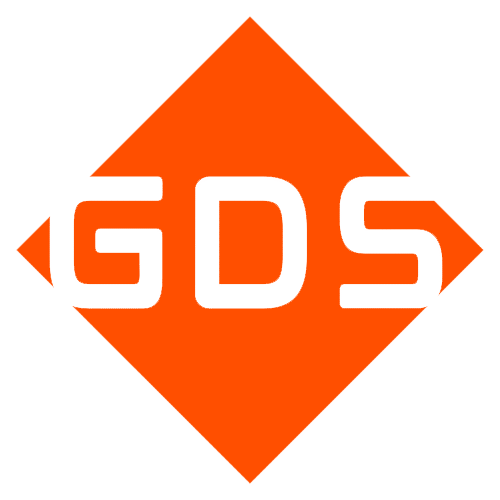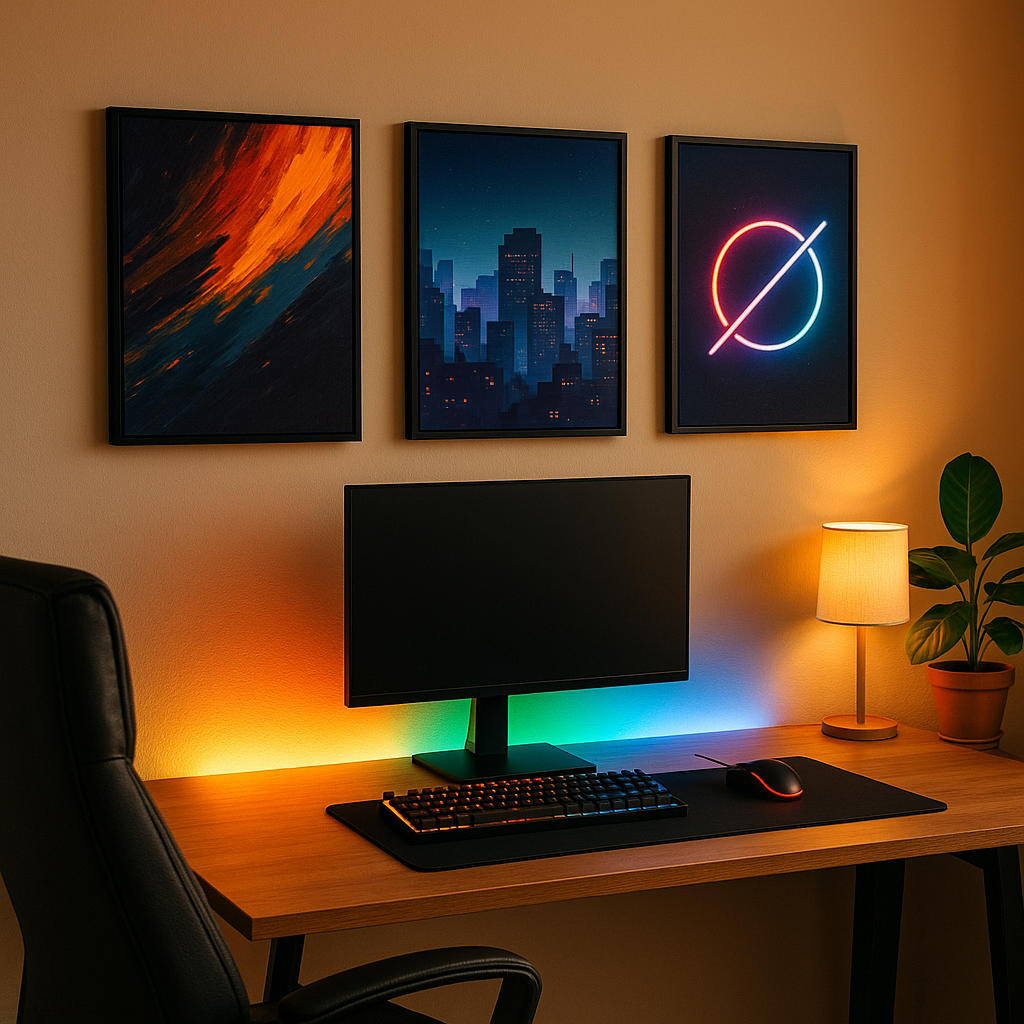You don’t need licensed characters to make a gaming room look incredible. With the right mix of abstract patterns, pixel motifs, and neon accents, you can build walls that feel gaming-native, original, and safe to sell or showcase. This guide breaks down three no-IP styles, how to design or source them, and how to make them photograph well in a setup.
Frequently Asked Questions
Why no-IP wall art works
- Original and safe: No infringement risk; perfect for stores and personal branding.
- Timeless: Trends shift, but color, shape, and mood stay relevant.
- Matches any setup: Coordinate with desk mats, keycaps, LED lighting, and furniture.
1) Abstract: motion, energy, and focus
What it is
Nonfigurative shapes, gradients, brush strokes, geometric waves, or particle flows that suggest speed and focus without referencing an IP.
Design cues that feel “gamer”
- Dynamic diagonals, arcs, or speed lines
- Contrast pairs: deep charcoal vs electric accents
- Textured noise, halftone grains, light streaks
Color palettes
- Crimson + charcoal + gold accents (competitive vibe)
- Teal + violet + graphite (modern sci-fi)
- Espresso brown (#8B5A2B) + warm neutrals (cozy minimal; pairs with plants and wood)
Where it fits
Above ultrawide monitors, dual-monitor walls, or as a long triptych over a desk.
Pro tip
Tie the canvas accent color to your mouse pad or RGB underglow to unify the scene.
2) Pixel: retro charm with modern polish
What it is
8-bit/16-bit patterns, isometric tiles, voxel grids, or stylized pixel landscapes. No characters needed—let color and composition carry the theme.
Design cues
- Isometric cities, dungeons, or “floating island” biomes
- Pixel gradients, heart containers, or abstract HUD-style shapes
- Checker repeats or tiled borders framing a blank center
Color palettes
- Pastel pixel: mint, peach, cream for soft retro
- Night arcade: cobalt, magenta, neon lime on dark graphite
- Mono-pixel: black/white with a single accent for minimal setups
Where it fits
Great for hallway gallery walls, small frames around a streaming backdrop, or a single statement canvas behind the chair.
Pro tip
Use matte paper or textured canvas for pixel work—gloss can create moiré on camera.
3) Neon: cyber accents without the cliché
What it is
Glows, tubes, and luminous outlines that echo arcades and city nights—no logos or characters. Think shapes and signs, not brand marks.
Design cues
- Outlined geometric frames, rings, and grids
- Light trails and neon tubes with soft bloom
- Dark backgrounds to make the glow pop
Color palettes
- Magenta + cyan + deep navy
- Amber + coral + midnight blue (pairs well with warm desk lamps)
- Purple + teal + charcoal for classic synthwave
Where it fits
Best for a single large acrylic or metal print; also strong as an LED-diffused lightbox.
Pro tip
If you have bright RGB, choose more restrained neon artwork so the wall doesn’t compete with your lighting.
Formats and materials that look premium
Canvas (matte): Soft, non-reflective, forgiving in photos.
Metal prints (aluminum): Crisp and modern; great for neon and abstract shapes.
Acrylic face-mount: Glassy, high contrast; dramatic for dark neon scenes.
Matte poster with frame: Budget-friendly; swap art seasonally.
Sizes that stage well above a desk:
- Single: 24×36 in or 30×40 in
- Triptych: three 12×18 or 16×24 panels
- Grid: six 12×12 squares (pixel art looks great)
Layouts that photograph well
- Centered anchor: One large piece centered with equal breathing space around the monitor.
- Triptych spread: Panels aligned with desk width; match gaps to monitor width for symmetry.
- Offset column: Tall piece to one side, plant on the other, lamp balancing the opposite edge.
Use a small bias light behind the monitor to separate the wall art with a soft halo.
How to style a no-IP gallery in one afternoon
- Choose a color story (two main colors, one neutral).
- Pick one hero piece (abstract or neon), then add two supporting pieces (pixel or geometric).
- Hang art at eye level when seated; align the center with the monitor centerline.
- Add a plant and a warm lamp to soften edges.
- Photograph with the room lights dimmed and bias light on.
Quick buying/printing checklist
- 300 DPI source at print size (or vector)
- 2–5 mm bleed for edge-wrapped canvas
- Non-glare finish for streaming backgrounds
- Include a hanging template or painter’s tape guide
- Microfiber cloth in package to remove dust before mounting


